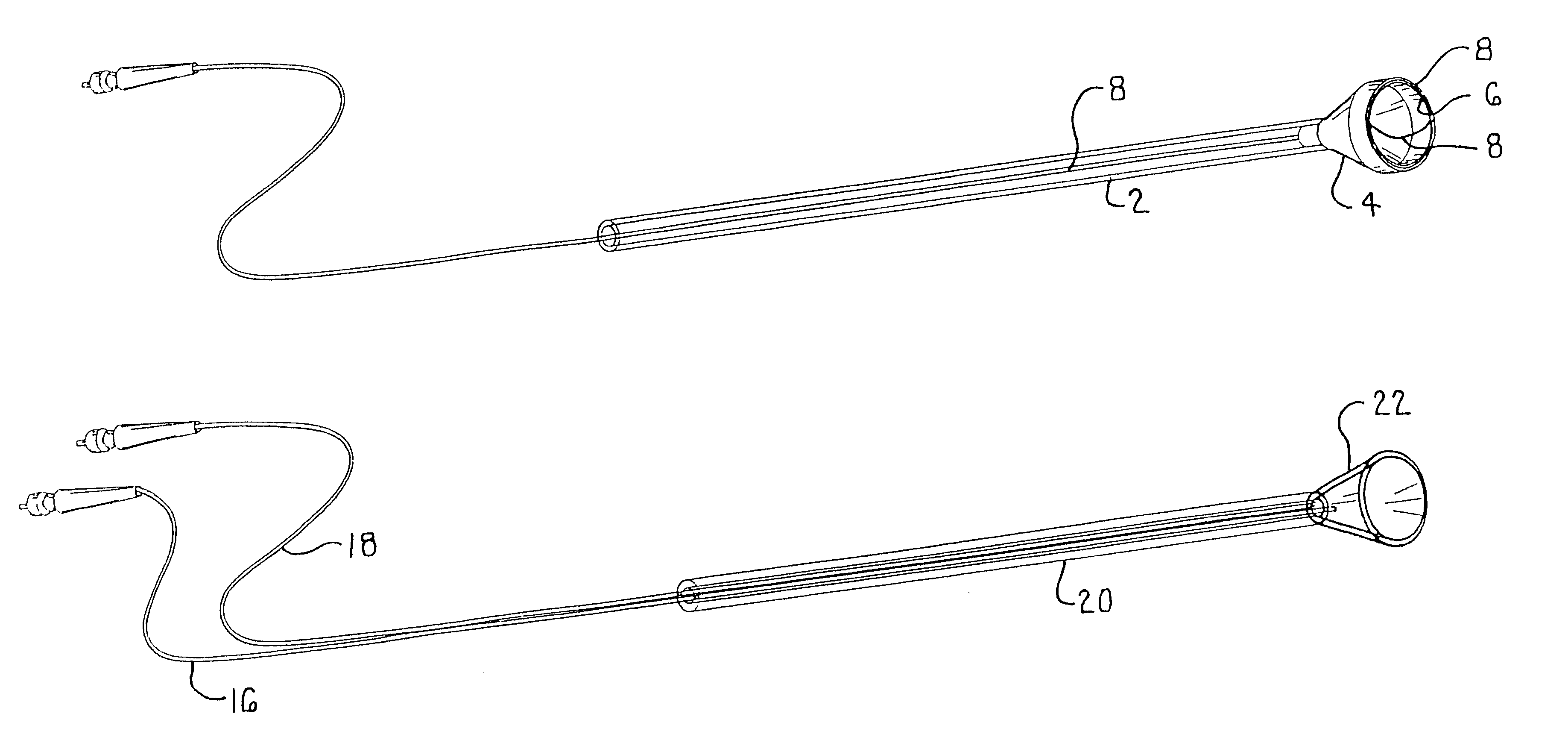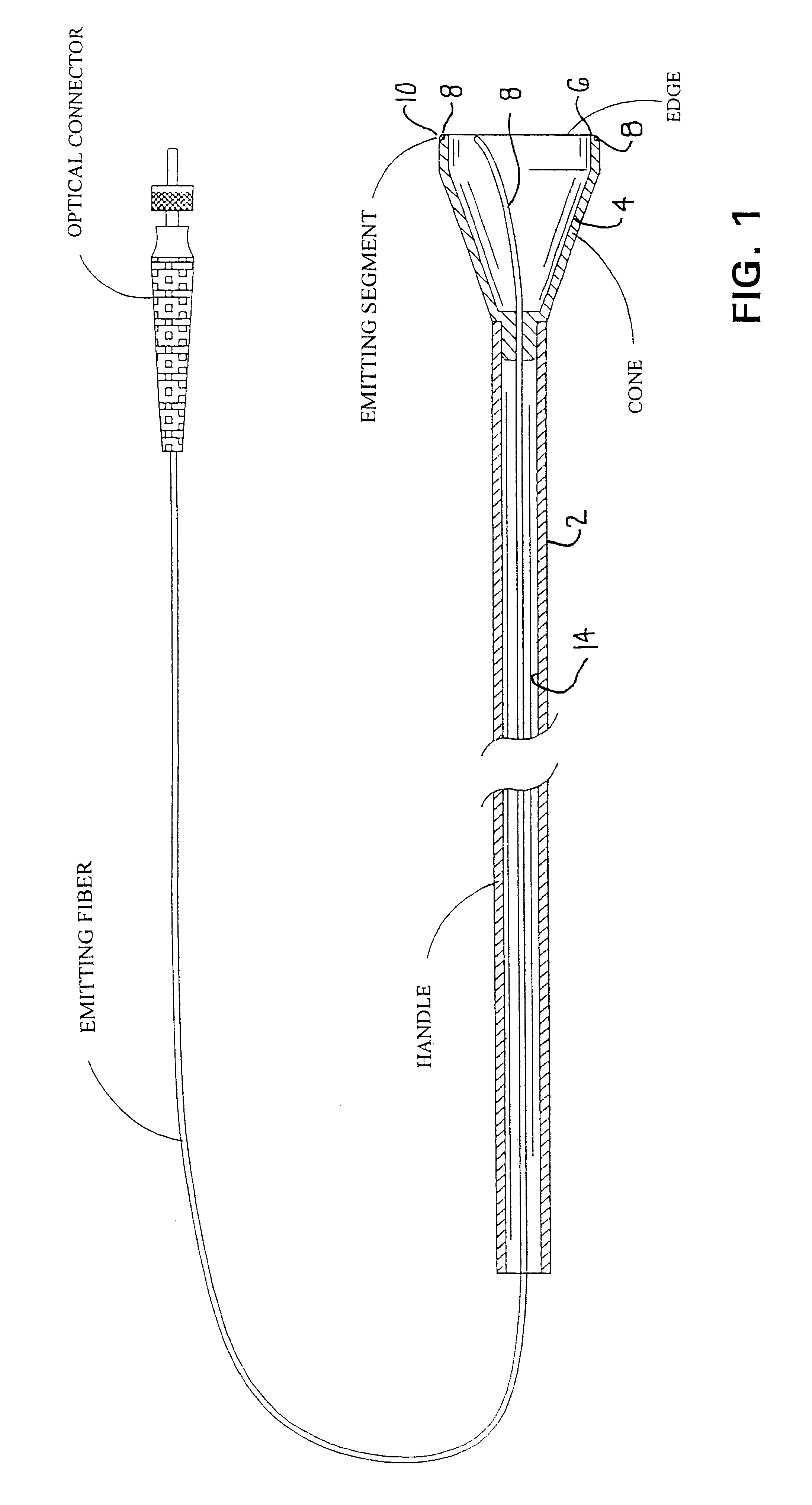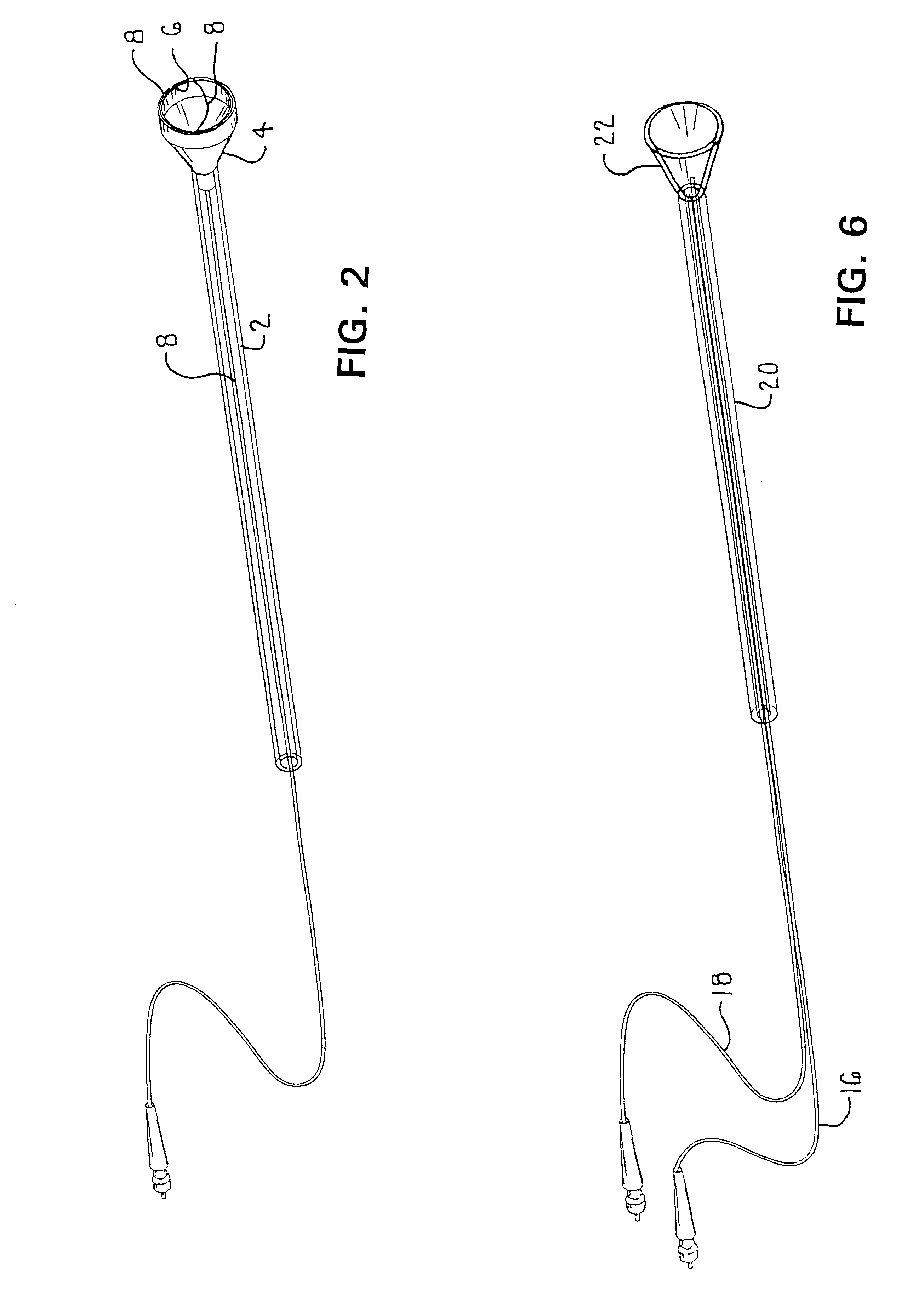Circumferential transillumination of anatomic junctions using light energy
- Summary
- Abstract
- Description
- Claims
- Application Information
AI Technical Summary
Benefits of technology
Problems solved by technology
Method used
Image
Examples
Embodiment Construction
Referring to FIGS. 1, 2, 3 and 4 of the accompanying drawings, the CJT in accordance with the invention comprises a handle 2 attached to the virtual apex of a hollow cone 4. The distal aspect of the cone has an edge 6 to receive an emitting fiber 8. The distal portion of the emitting fiber (ESKA SK-40) is scored at 10 to form the emitting segment as shown in FIG. 4. The region 10 of the fiber is circumferentially bonded to the edge 6 of the cone 4 using epoxy or the like. The emitting fiber has an optical connector 12 (SMA-905) fitted at its proximal end. The emitting fiber is secured to the inside wall 14 of the cone 4 as it passes out of the handle. The emitting segment bonded to the edge of the cone allows light to exit the wall of the end of the emitting fiber 8 resulting in a circumferential light emitting junctional transilluminator.
The emitting segment can be selectively abraded or scored so as to allow light to be emitted such that the entire cervico-vaginal junction (circum...
PUM
 Login to View More
Login to View More Abstract
Description
Claims
Application Information
 Login to View More
Login to View More - R&D
- Intellectual Property
- Life Sciences
- Materials
- Tech Scout
- Unparalleled Data Quality
- Higher Quality Content
- 60% Fewer Hallucinations
Browse by: Latest US Patents, China's latest patents, Technical Efficacy Thesaurus, Application Domain, Technology Topic, Popular Technical Reports.
© 2025 PatSnap. All rights reserved.Legal|Privacy policy|Modern Slavery Act Transparency Statement|Sitemap|About US| Contact US: help@patsnap.com



